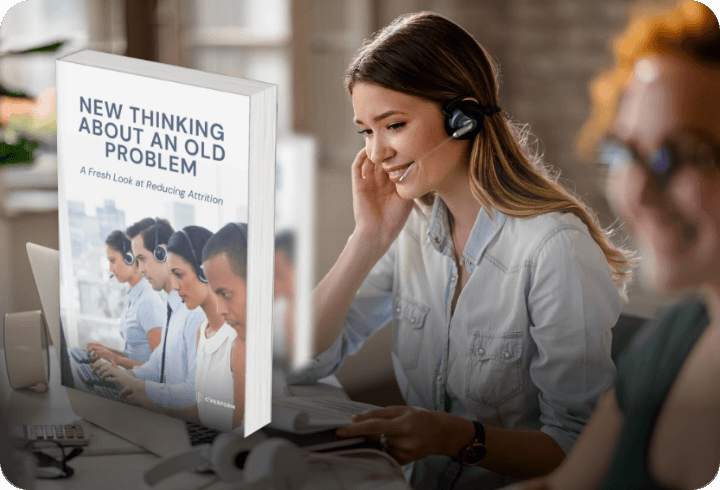In the contact/call center, quality assurance is a bit different than it would be for a manufacturer or software development company. The goals of quality assurance training efforts in a contact center will likewise differ from the QA training goals of other organizations and teams.
To help your contact center build a better quality assurance program, it’s important to understand the needs of QA and to have the right QA tools to make your program practical. Whether you’re building a new quality assurance program from scratch or are modifying an existing plan, it can help to review some basic information and advice before finalizing your plan.
Basic Needs of a Quality Assurance Program
So, what does a quality assurance program need to have in order to help your contact/call center consistently meet its quality control goals? Some of the basic requirements of an effective quality assurance system include:
1. Established Quality Assurance Process Documents
Comprehensive documentation is crucial for any successful business initiative. Without clearly-defined rules and processes, quality assurance efforts will struggle to produce consistent results as individuals set their own rules, metrics, and goals for QA systems.
So, it’s important to create (and disseminate) a set of QA process documents for employees and leadership alike to reference. Some key sections to include in your quality assurance documents include:
- What your quality goals are
- Specific quality controls used in your call center to support QA goals
- Definitions of the QA metrics used to measure progress towards quality goals
- Roles and responsibilities for quality assurance processes
- Step-by-step instructions for assessing quality outcomes
Once created, these documents should be referenced in employee training and coaching sessions to help ensure that everyone in the call center is familiar with their contents and the requirements they establish.
2: A Formal Training Program
Quality assurance training is a necessity for ensuring that everyone in the call center knows what is expected of them in the QA program and why. Whether training occurs during employee orientation, at specified times throughout the year, or in the form of one-on-one coaching sessions on an “as needed” basis (or some combination of all three), it can be invaluable for keeping your entire team on the same page when it comes to QA goals.
When creating training content, it can help to refer to your QA documents to ensure that training content covers everything that your team needs to know to meet expectations. It can also help to review results from your QA program to identify any areas where call center staff are struggling so that can be focused on in training content.
3. Quality Assurance Tools to Track Results and Improve Coaching
To enact a quality assurance program, it’s important to have a means of tracking your QA metrics, imparting important information to employees, and educating call center staff who can benefit from just a little extra support. This is where having a platform of QA tools that include solutions for talent management, performance monitoring, employee communication, and dynamic coaching can prove invaluable.
By tracking how well each employee aligns with the organization’s overall quality goals, it’s easier to create customized strategies for improving performance. This also makes it easier to track the success of QA efforts—helping to justify expenditures on quality assurance systems and processes so further improvements can be made.
Tips for Improving QA
To maximize quality in your call center, it’s important to follow some QA best practices that can help you gather more accurate and reliable insights, help employees achieve peak performance, and ensure the consistent application of quality standards.
Here are a few tips that you can follow to start improving your quality assurance processes as soon as possible:
- Collect “360 Degree” Feedback. Gathering feedback about employee performance and attitudes from their coworkers, leaders, and customers is important. However, this feedback should be corroborated by multiple sources whenever possible to minimize the risk of bias impacting an employee’s assessment. For example, if you ask 20 people about an employee’s performance and attitude, and 19 out of those 20 people agree on their performance, then you can isolate the dissenting opinion as either an anomaly or a potential case of personal bias. If employees earn consistent praise from multiple sources from peers, leaders, and/or customers, you’ll know that you can use that employee as an example of good behaviors to practice.
- Check Call Recordings Frequently. The recorded warning of “this call may be recorded for quality assurance purposes” is a staple of the contact center industry. Call recordings can be invaluable for getting definitive proof of how contact center staff are interacting with their customers. Frequently listening to random call recordings can help managers identify potential issues that may be affecting call center service quality and performance. For example, are employees following the call script, or are they ad-libbing their way through conversations? Is their tone of voice respectful and supportive or combative? Additionally, if there is a specific complaint about a call center employee, listening to the call recording can provide vital evidence to confirm or deny the accusation.
- Periodically Reassess Your QA Process. It is normal for your organization’s priorities and needs to change over time. So, it’s important to periodically review your quality processes and identify if there are any changes that need to be made. For example, if your call center employees are consistently meeting a goal that you’ve made the centerpiece for your coaching/training sessions, then you might want to change focus to a new issue based on any weaknesses you’ve identified. It can also help to look at the quality metrics you’re tracking to see if they’re actually providing useful insights. If not, then it might be time to switch to new metrics and possibly even reassess what your goals are and what they mean for your business strategy.
- Analyze Correlations Between Process Goals and Results. What actions, when taken consistently, drive metrics like customer satisfaction, deals closed, and other major business goals? Part of an effective QA process is diving into your data to analyze processes and how they relate to your results. For example, do contact center employees who spend more time on the phone with customers in your organization close more deals than ones who spend less time with each call? If so, is the difference statistically significant enough to indicate a strong correlation? In such cases, it may be worth modifying priorities or process goals to see if they have an impact on results.
- Maintain Documents from Every Evaluation and Coaching Session. When evaluating and coaching employees, it’s vital to keep an accurate record of each interaction for future reference. This is useful for tracking the trajectory of an employee’s performance and response to their coaching and evaluation sessions. For example, does the employee make a sincere effort to improve on items brought up during a performance evaluation? Or, do they remain unresponsive when performance and quality issues are brought to their attention? Employees that consistently work towards improving their performance following coaching are much less likely to engage in voluntary turnover than their less responsive peers.
Get an Ideal Suite of Quality Assurance Tools Now!
Need help enabling a stronger QA process in your organization? Get a comprehensive employee engagement and performance improvement platform that combines talent management, employee communications, coaching, knowledge management, and employee engagement in a single resource that drives continuous improvement.
C2Perform helps you connect with your team, drive quality, and make your organization a bit better every day. Schedule a demo now to get some hands-on time with the most complete employee engagement platform on the market!
 English
English Español
Español





.png?height=350&name=Untitled%20(300%20x%20175%20px).png)



